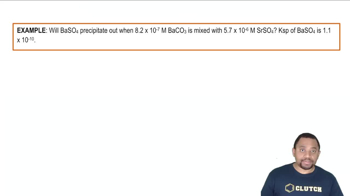This graph shows a plot of the rate of a reaction versus the concentration of the reactant A for the reaction A → products. a. What is the order of the reaction with respect to A?
This graph shows a plot of the rate of a reaction versus the concentration of the reactant.
b. Make a rough sketch of a plot of [A] versus time
 Verified step by step guidance
Verified step by step guidanceRecommended similar problem, with video answer:

Verified Solution
Key Concepts
Reaction Rate

Concentration vs. Time Graphs

Integrated Rate Laws

This graph shows a plot of the rate of a reaction versus the concentration of the reactant A for the reaction A → products. c. Write a rate law for the reaction including an estimate for the value of k.
This graph shows a plot of the rate of a reaction versus the concentration of the reactant.
a. What is the order of the reaction with respect to A?
This graph shows a plot of the rate of a reaction versus the concentration of the reactant.
c. Write a rate law for the reaction including the value of k.
What are the units of k for each type of reaction?
a. first-order reaction
b. second-order reaction
c. zero-order reaction
This reaction is first order in N2O5: N2O5(g) → NO3(g) + NO2(g) The rate constant for the reaction at a certain temperature is 0.053/s. a. Calculate the rate of the reaction when [N2O5] = 0.055 M
